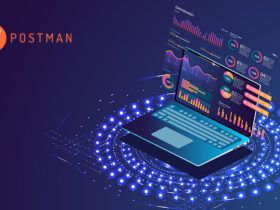Modern business settings have a large and quickly expanding hacking area. Since this is the case, it takes more than human involvement in assessing and enhancing a company’s defence position.
Information security increasingly relies on artificial intelligence and machine learning because they can rapidly evaluate massive data sets in search of cyber threats. These threats can range from malicious software to suspicious activity that could lead to a hacking assault.
These systems constantly evolve, relying on prior events and real-time information to identify and prevent emerging threats.
In cybersecurity, AI looks at how systems are used to find possibly destructive behaviours or dangerous players and predict cyber strikes before they happen. AI-powered automatic tracking keeps systems safe 24 hours a day, 7 days a week, and lets groups take preventative steps before damage is done.
In this blog, let’s look at why AI is now in cybersecurity.
What Does AI Involve in Cybersecurity?
AI is typically applied across disciplines to utilize data for informed decision-making better. Cyber danger identification activities can be scaled with the help of AI by eliminating unnecessary “noise.”
By doing so, you can assess potential countermeasures in light of those particular dangers and arrive at more informed choices about cyber security.
Significant Applications of AI in Cybersecurity
Phishing and malware detection
Malicious software, or “malware” for short, is any program written to damage a user’s system after loading it. Examples of typical viral behaviour include:
Removing of Data
Requiring duplication of everything
Data encryption
Connecting to and controlling a machine remotely
Fraudulent marketing
Monitoring the activities of users (spyware)
Knowledge consolidation
Cybersecurity dangers can happen to any web system. You should put them in place and follow security rules and standards to stop them.
The hundreds of software vulnerabilities make it difficult for cybersecurity professionals to keep their heads up. That’s why human threats always run the risk of security leaks.
Security systems that use ML can reduce the number of mistakes people make. Models that use machine learning can remember information from data and use that information to find security breaches.
Also Read: The 3 Stages of the Data Privacy Maturity Curve
Detecting and identifying new threats
It’s alarming that approximately 20,000 flaws were discovered in 2022. Cybersecurity experts find it harder to track all digital dangers due to the intricacies of software design. Machine learning security can help.
The latest threats and weaknesses are added to artificial intelligence models so they can be used to fight new threat agents and stop attacks.
It’s great that Microsoft, IBM and Google are investing money into AI systems to find and stop dangers. Regarding computer security, Google’s Project Zero team is your best bet.
Overall, it’s clear that AI is playing an increasingly important role in the fight against cyber threats, and we can expect to see even more impressive advancements in the years to come.
Enhancing Your Network Security
Network security is critical in safeguarding files and data against unauthorized access, destruction, and misuse. It’s also essential to ensure a network’s confidentiality within an organization. With the help of AI, network traffic can be automatically analyzed to detect potential breaches or unauthorized access.
When it comes to network security, having a well-designed security policy is crucial. Network architecture plays a critical role in determining how a business connects to the internet, and it’s essential in keeping the business reliably and safely connected to the internet. On the other hand, network policies are utilized to formalize the guidelines and procedures employed to keep a network secure.
According to Toolbox, AI can help by mapping network traffic patterns to these security policies and employing them to enhance the network’s overall security. Overall, AI is proving to be a valuable tool in network security, and its use will continue to increase as businesses strive to protect themselves from potential cyber threats.
Automation of tasks
Cybersecurity emergencies demand prompt action. The longer it takes to detect and mitigate a threat, the more destruction can be done. Attackers can encode or take data, hide their marks, and install backdoors if they have time to wait for manual threat detection procedures.
Artificial intelligence (AI) may streamline threat discovery and take instant action, drastically reducing the time it takes to identify and respond to online attacks. IBM claims that using AI methods can cut this period by 98 days.
Automated AI threat detection can analyze and respond to potentially dangerous situations in minutes, processing billions of network queries, destinations, users, and data points daily.
It contrasts with manual threat detection, which can take hours or days to complete.
By automating the threat detection process, AI can help organizations protect against cyber threats more effectively, minimizing the damage caused and reducing the risk of future attacks.
Breach risk prediction
In enterprise cybersecurity, the vast number of IT assets can make analyzing every component for security risks challenging. AI tools offer a solution by identifying the most vulnerable components and predicting potential attack types.
To bolster security further, cognitive learning-based models can monitor security access points and detect remote hacks early, creating additional security layers to prevent data breaches. By alerting users to security threats as soon as they occur, organizations can quickly allocate resources and tools to minimize the damage and develop a resilient cybersecurity strategy for the future.
Artificial Intelligence’s Benefits for Cybersecurity
Artificial intelligence has a lot of benefits and uses in many fields, and one of those is safety. With breaches changing quickly and the number of devices growing, machine learning and artificial intelligence can help keep up with hackers, automate danger detection, and work better than human methods.
Some advantages of AI in cyber security are as follows:
New threats detection
Artificial intelligence is a powerful tool for detecting and preventing cyber threats. AI’s ability to analyze large amounts of data and identify patterns can assist in identifying potential hazards before they become an issue.
In addition to detecting malware attacks, AI can be used for predictive intelligence and threat hunting. By analyzing data from various sources, including news articles, social media, and other online sources, AI can identify emerging trends and potential threats.
Moreover, AI can also be used to prioritize cybersecurity efforts. Organizations can allocate resources more effectively and focus on the most critical vulnerabilities by analyzing various threats’ likelihood and potential impact.
But it’s important to remember that AI security systems must be more foolproof and constantly checked and tweaked. Cybercriminals are constantly evolving their tactics, and AI systems need to be able to adapt and learn in real time to stay ahead of the threats.
Overall, AI can be a powerful tool in the fight against cyber threats. Still, it should be used with other security measures and ongoing human oversight to ensure its effectiveness.
Battling Bots
Web traffic is dominated by bots, which can be hazardous. Bots present several security risks, including account takeovers via stolen passwords, fake accounts, and data theft.
You cannot combat automated hazards with only manual responses. With the help of AI and ML, web admins can learn more about their visitors and identify the difference between legit and malicious algorithms.
With the help of AI, we can sort through vast quantities of data rapidly, allowing teams to quickly adjust their methods to a dynamic and changing threat landscape.
Prediction of Breach Threat
If AI-based systems have a precise and detailed list of IT assets, they can foresee the likelihood and impact of possible cyber threats. It lets organizations prioritize their resources and focus on the most critical vulnerabilities.
AI can also advise improving cybersecurity processing to make the system more resilient. AI can find places where controls and processes are weak or not working well by looking at data from different sources, like security logs and incident reports, and recommending specific steps to fix them.
It can include implementing more robust authentication measures and upgrading software and hardware to protect against cyber threats.
Advanced Endpoint Security
Artificial intelligence (AI) is essential in ensuring the safety of the ever-growing number of remote-access devices.
Antivirus software and virtual private networks (VPNs) are valuable tools for protecting against distant attacks, but they typically rely on indicators to do their job. Therefore, it is crucial to regularly update signature specifications to ensure continued protection against emerging threats.
Lack of up-to-date malware standards, whether from user inattention or provider neglect, is a potential problem. Thus, signature security may not be adequate in the event of an unusual kind of malware attack.
Final Thoughts
Artificial intelligence (AI) is rapidly becoming an essential tool for improving the efficiency of IT security teams. Security pros can use AI’s research and danger detection to reduce incident risk and improve security stance, a factor humans can’t do on a large enough scale to do on their own.
Additionally, AI can help in the early detection and prevention of ransomware attacks, the discovery and prioritization of risks, and the direction of crisis reaction.
Despite the threats, AI will help advance cybercrime and enable businesses to build more robust security measures.


































